LHC erar la física
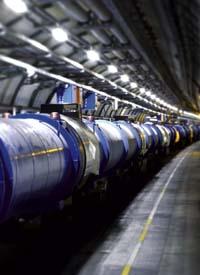
Replacing a machine with a more modern one is logical, but in this case it is a very brave change, the LEP accelerator, which was dismantled by being the most powerful in the world.
And they knew they would need years to replace them. In the end they have been seven and a half, and that is a long time for research. In the investigation of particle physics many projects were forced to paralyze or suspend. This delayed the plans of many groups. Presumably the new throttle deserved this delay.
What they expect
It is believed that the LHC accelerator will compensate for the interruption: it is much better than the previous one, although it physically occupies the same place. Since the same hole has been used for the new installation, its size is equal to the OPE: Circular conduit of about 27 kilometers. It is located under the boundary between Switzerland and France, on the ground, 50 meters at the highest point and 175 meters at the deepest point. It is the same hole as the old LP, and yet to install a new and powerful detector, they have had to expand the gap in some areas near the accelerator. However, this is a basically circular travel pipe. A pair of tubes is actually two parallels that cross at various points. Physicists will speed up particles in the tubes and cause them to crash at intersections.
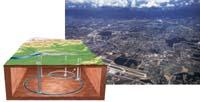
This is the goal of an accelerator: generate high-energy collisions between particles. Physicists will detect and analyze collision results to investigate the original particles. And there is the main difference between the old and the new accelerator, the LHC has a much greater power generation capacity than the old LEP.
How much? It can be put into numbers. Physicists supply the energy data generated by accelerators in electron-volts (eV). An electron is the energy that brings the potential of a volt to an electron. The greatest energy obtained by the LEP accelerator was 209 GeV (209 billion eV), and experts estimate that the LHC will reach 7 TeV (7 billion eV). This means that the particles will collide with an energy of 14 TeV.
And with that energy, what? Because with that energy they will do experiments that they have not yet imagined. In the old LEP electrons and similar particles were accelerated (hence the name Large Electron-Positron collider). But the goal of the LHC is to accelerate protons. This requires much more energy, as protons are 1,836 times heavier than electrons. In fact, in addition to protons, they will accelerate other particles, but of protonic size or greater. This type of particles are called hadrons, so they have given their name to the LHC: Large Hadron Collider.
Bosón Higgs
The acceleration of the hadron to the energy of 7 TeV has been a dream so far. But since they saw it possible, physicists begin to invent new experiments. They know perfectly what they will do with the new accelerator, at least in the short term.
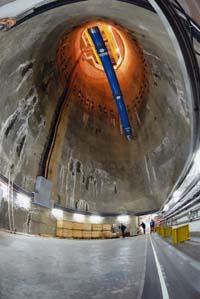
The first objective is to find a particle called the Higgs boson. At present almost no one writes about the LHC accelerator without mentioning the Higgs boson. Similarly, no one knows whether or not the Higgs boson exists because they have never detected it. Some scientists say yes, that it has appeared in a series of violent shocks, but that somehow the researchers who have done the experiment have not realized because they were looking for other particles. However, this debate is sterile for the moment, among other things because they will need an LHC throttle to be able to show whether or not. Therefore, it can be said that at the moment the Higgs boson has not been detected.
But it must exist based on a hypothesis that explains why mass exists better. The detection of the Higgs boson is a major step in the investigation of particle physics (some would not say “if the Higgs boson was detected”, but “when they find the Higgs boson”, convinced that they will soon find it, although it is preferable to be cautious).
In fact, many physicists asked that the LEP accelerator not close because they were supposedly about to detect the Higgs boson. The CERN management was asked to wait a year. The management gave them a month to detect signs that the Higgs particle would actually be detected. Last month, the physicists claimed yes, they had proven they were close to detecting, but the CERN leadership told them no. And they closed the LEP accelerator.
In addition to the Higgs boson
The search for a single particle does not satisfy the desire to experiment with modern physics, even if this is the Higgs boson. Despite the Higgs boson, physicists have high expectations.
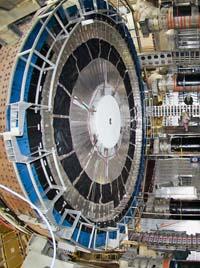
It is believed that they will launch experiments that answer many questions of basic physics. For each type of experiment, a special detector (or a group of special detectors) has also been installed in the LHC. Six installations have been installed at four collision points. They have been called experiments and most are giant installations.
They seek answers to basic questions. Finding the Higgs boson can help explain what mass is. It will also investigate the electrical charge in the LHC, as it will look for the basic components of charged particles and the interactions between them will be studied. In addition, they will analyze the balance between matter and antimatería. At the beginning of the universe the two were created, but not in the same quantities; as when colliding between them they disappear, it is clear that there was more matter than antimatería; in the collisions all the antimatería disappeared, but some matter remained, and therefore we exist. This process will be investigated through the LHC accelerator, creating protons, antiprotons and colliding with each other.
They will also answer other questions, which may not be considered basic, but which have acquired great importance in physics in recent years. On the one hand, they will investigate the hypotheses of matter and the dark energies of the universe through the LHC. On the other hand, the theory of supersymmetry, each of the particles we know corresponds to a symmetric particle (according to the theory of supersymmetry), since according to this theory both originated in the Big Bang explosion. LHC could find these "superparticles."
Finally, the LHC will accelerate the nuclei of heavy atoms to cause collisions between them. This experiment aims to create a plasma of quarkes and gluons, that is, a free mixture of the elementary particles that form protons. This mixture will teach them the strength that unites them.
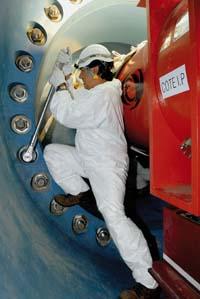
Facilities
The research of these small particles requires a very complex instrument, so all accelerators are very complex tools. And large accelerators are not a single instrument, but a set of tools. This LHC is not an accelerator but five accelerators, one after the other. It would be impossible for all the energy to generate to be generated by a single instrument, so it will be done in a staggered way.
Protons will be accelerated by a linear accelerator that will take an energy of 50 MeV. From there they are incorporated to the PSB accelerator ( Proton Synchrotron Booster) that reaches 1.4 GeV. From here to the PS accelerator ( Proton Synchrotron); 26 GeV. From here to the SPS accelerator ( Super Proton Synchrotron); 450 GeV. And finally they will be incorporated into the main accelerator of the LHC until reaching an energy of 7 TeV. At this point, protons will move almost at the speed of light (about 293,000 kilometers per second).
Controlling something that moves with those speeds and energies is not easy. In circular accelerators, for the particles to carry out the precise path, they are controlled by a magnetic field, that is, they move in a circle and not directly forward, since a magnetic field is constantly diverted. And the faster it moves, the more space it takes to divert the particle.
In the case of LHC, the speed and energy of protons are so high that the area must be very large. It is mandatory to use electromagnets of superconducting material (copper coated niobes with titanium cables). Superconductors only work at very low temperatures. Therefore, magnets should cool with liquid helium to 1.9 kelvin. But the electricity that passes through the electromagnet cables warms everything. Finally, the LHC cooling system will consume more energy than experiments.
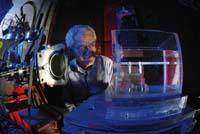
It also highlights the vacuum induction system. Whenever possible, all interfering particles or molecules must exit the LHC tube. It is impossible to extract it completely, but the LHC system allows only 3 million molecules to exist in every cubic centimeter.
They have made a great technological effort and spent a lot of money in the preparation of the LHC. Not counting detectors, just over €3 billion. And after seven and a half years of waiting, physicists begin to use now. Your work will show whether it was worth waiting.
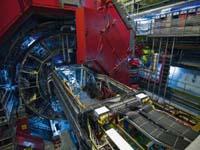
Buletina
Bidali zure helbide elektronikoa eta jaso asteroko buletina zure sarrera-ontzian











